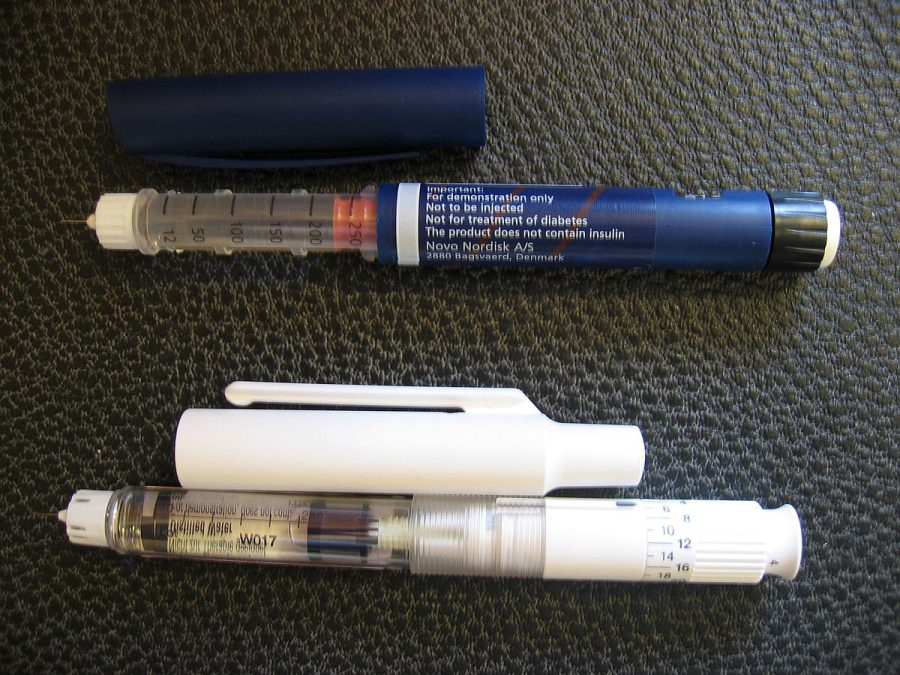Students struggle with rising price of life-saving drugs
As the price of EpiPens and insulin skyrockets, students struggle to catch up
Courtesy PerPlex/Wikimedia Commons
Pre-filled insulin syringes, or insulin pens, provide patients with a simple method to ensure that their blood sugar is in check. The cost of these and similar devices has skyrocketed in the United States in recent years, causing some to find alternative methods of care.
EpiPens, epinephrine auto injectors, is a life saving device that combats anaphylaxis, an allergic reaction, almost immediately. Many people in the United States need EpiPens for numerous allergies, however when it comes to the cost, EpiPens are barely affordable.
EpiPens’ cost has increased so much, some people have resorted to buying syringes of the drug itself, epinephrine, instead of the actual EpiPen. This can make it difficult to inject the drug when a patient is having an allergic reaction, and is not recommended by doctors.
Dutch pharmaceutical company Mylan is the main producer and seller of EpiPens. When they first started selling the injectors in 2007, one device cost around $60. In 2016 the price had jumped to about $600, according to Business Insider. That’s a 1000 percent increase, in just nine years.
EpiPens aren’t the only medicine whose price has increased significantly; Insulin has also increased in cost.
When Insulin first became commonly used it was taken from the pancreas of cattle; it wasn’t until more recently that a generic lab version became available. While this man-made version is a safer option for some people, it is also far more expensive.
The older type of Insulin has disappeared almost completely from the market, instead of remaining a cheaper option. Since this older type of Insulin has all but vanished in America, people are forced to buy the generic type which can cost over $400 a month.
Talia Raider-Roth, ‘20, was diagnosed with type one diabetes when she was two. She said that her parents and siblings have always been supportive.
“They’ve taught me not to be ashamed, it’s an important part of me,” Raider-Roth said.
Raider-Roth spent this past semester in Israel, where she noted that “the out of pocket cost there [for insulin] is less than 30 dollars whereas here in [the U.S.] it is much, much more.”
Israel isn’t an exception with the cost of Insulin. Many other countries have lower costs for all types of medicine, not just Insulin. Many aspects of the American healthcare system are similar to other high-income countries, however, the US spent over $3.45 trillion on healthcare in 2016. That is 17.8 percent of the U.S. GDP, in comparison to only 11.5 percent spent by Australia, Japan, and Germany, according to CNBC. Drugs and hospital services cost more, doctors get paid more, and we spend more time and money at the administrative level than most other countries. The average cost of an MRI in the US in 2013 was $1,145 compared to Australia’s $350.
Raider-Roth said, “I think that if it is a necessary medication that keeps someone alive it should be affordable. I think that bringing awareness to the ridiculous cost of all vital medicine, not just insulin, is extremely important because not everyone is fortunate enough to have enough money to buy their medicine.”
These discrepancies and high costs aren’t just a matter of numbers on paper, they’re a matter of lives.
Your donation will support the student journalists of Walnut Hills High School. Your contribution will allow us to purchase equipment, cover our annual website hosting, printing costs and offset competition and conferences fees for students.













